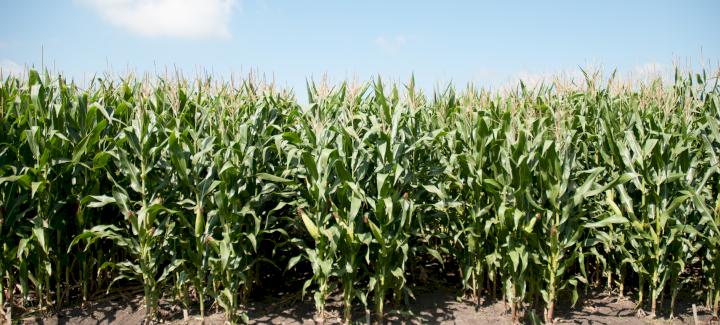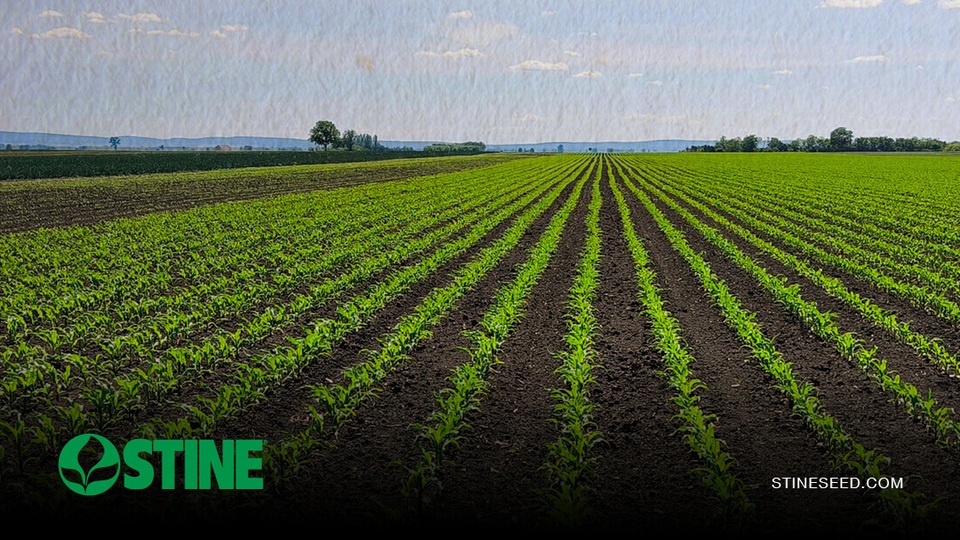
Corn planting is underway. According to the latest National Agricultural Statistics Service Crop Progress report, Kansas, Kentucky, Missouri, North Carolina, Nebraska, Pennsylvania, Tennessee and Texas have crops in the ground.
“As planting season progresses, it’s a good time to walk through the different crop diseases growers need to look out for,” says Tom Larson, Stine corn technical agronomist. “There are symptoms that can appear as early as emergence, but luckily there are strategies growers can execute to get ahead of the problem.”
The most common corn diseases
Growers are all too familiar with most corn diseases, but there are a handful that can wreak havoc on fields year after year as environmental conditions allow. Some of the most common corn diseases growers should be on the lookout for include:
Tar spot. Tar spot overwinters in corn residue and can thrive in hot, wet conditions. Symptoms include small, raised black spots that resemble fisheyes scattered on both sides of the leaves. Unlike some foliar pustules, tar spot cannot be scraped off leaves. Scouting for the disease is recommended between the R3 and R6 growth stages.
“Tar spot is a big concern for growers as it can cause significant yield loss,” says Tony Lenz, Stine corn technical agronomist. “If it’s been an issue for you in the past, there are some resistant hybrids that can help keep the disease at bay, but a mix of crop rotation and tillage is also recommended.”
Gray leaf spot. A foliar disease, gray leaf spot can overwinter on residue and poses a significant yield threat. It thrives in hot, wet climates and has symptoms similar to other foliar diseases. It can be distinguished by small, pinpoint lesions that form a yellowish halo and eventually produce much longer lesions. Gray leaf spot is typically detected between the V15 and R4 growth stages.
“Rotation is key here as the disease is more prevalent in corn after corn fields,” says Lenz. “Other options to mitigate gray leaf spot include using a resistant hybrid and applying strobilurin and triazole-type fungicides.”
Northern corn leaf blight. This disease thrives in cool, wet conditions and can be detected by tan streaks or lesions that appear parallel to the leaf structure. The best time to scout for northern corn leaf blight is from V15 through R4. The disease overwinters in corn residue, so growers who have had it in their fields should consider resistant hybrids and other modes of action like fungicides and tillage.
“Tillage is a solid option for growers experiencing heavy Northern corn leaf blight pressure,” says Larson. “In no-till systems, rotation can help reduce spores.”
Common rust. Not to be confused with southern rust, common rust is environmental and prolific in cool, wet conditions. Symptoms crop up between V12 and R4 and include sporadic rust-colored pustules, which can be detected on both sides of the leaves.
“Fortunately, common rust typically does not cause significant yield damage. And there’s not a lot growers need to do in-season for the disease,” says Larson. “That said, it is something growers should get in front of by bringing in a resistant hybrid for next planting season.”
The less common — but not to be disregarded! — corn diseases
While some corn diseases are more prevalent and prolific than others, there are some that, while less common, can’t be ignored for another year.
“Stalk rots and ear molds can rear their ugly heads later in the growing season,” says Bill Kessinger, Stine corn technical agronomist. “And many other corn diseases can threaten yield early on. Scouting is critical from emergence through harvest for any corn field,”
Early-season diseases
As soon as corn is in the ground and emergence begins, growers need to look for seed decay, seedling blights and root rot. These early-season diseases favor cold, wet soils and can result from compacted soils. Symptoms can be detected by digging up the seed to look for any brownish-black discoloration of the mesocotyl region. Seed can have a rotting appearance as can the roots. Later, these diseases can result in stunted plants and wilting.
Mid- to late-season diseases
Ear molds appear later in the growing season. They are environmental and caused by the same pathogens that trigger stalk rots. Pathogens produce mold on the ear that can vary in color. As a reminder, ear molds can produce mycotoxins that are dangerous if ingested by livestock.
Foliar diseases like Anthracnose leaf blight and Goss’s wilt can appear later in the growing season. Symptoms of Anthracnose leaf blight include oval-shaped lesions that first appear on the lower leaves, working their way up and turning black. Goss’s wilt appears as wavy lesions on the leaves that exude a water-like substance.
Other foliar diseases that may appear later in the season include Physoderma brown spot, crazy top, Holcus leaf spot and Stewart’s Wilt. And Anthracnose stalk and top dieback are vascular infections of leaf spot that can be problematic. Find more information on these diseases in this article.
“Regardless of the corn disease, growers have options. A healthy mix of choosing the right hybrid and fungicide and employing crop rotation and tillage can make all the difference to yield,” says Kessinger.
For more information on common corn diseases and how to keep them at bay now and in the future, reach out to your local Stine agronomist or sales rep. University extension services also offer valuable advice on detection and mitigation strategies for these diseases.
Citation
Sept. 2017, Corn Diseases, Iowa State University of Science and Technology, Iowa State University Extension and Outreach.
Related Articles
-

Standing out by being shorter: All about short-stature corn
June 2025 in Agronomy
-

Stay ahead of midseason threats
June 2025 in Agronomy
-

Staying ahead with early-season crop scouting and weed management
June 2025 in Agronomy
-

Nutrient strategies to push yield this season
May 2025 in Agronomy



